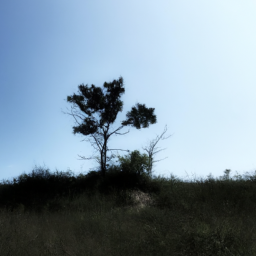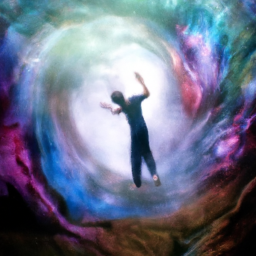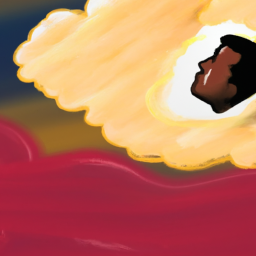Animals definitely dream too. During REM sleep, they show brain activity similar to when they’re awake, and physical signs like twitching, eye movements, or body movements indicate they’re experiencing something internal. This suggests they’re imagining, replaying memories, or practicing skills, just like humans do. The evidence from multiple species shows dreaming is common in the animal kingdom. Curious about how scientists know all this? Keep exploring to discover more fascinating details.
Key Takeaways
- Many animals exhibit REM sleep, during which neural activity resembles wakefulness, indicating potential dreaming.
- Physical signs like twitching or eye movements during sleep support the idea that animals experience dreams.
- Brain regions involved in emotion and memory activate during REM sleep, similar to human dreaming processes.
- Different species, including birds and mammals, show sleep patterns with active neural states suggestive of mental imagery.
- The neural activity during REM sleep implies animals might replay experiences or rehearse skills, akin to dreaming.

Have you ever wondered if animals experience dreams like humans do? It’s a captivating question that has intrigued scientists for decades. While we can’t ask animals directly, research provides strong clues. One of the key indicators lies in the way their brains behave during sleep. Just like humans, many animals enter a phase called REM sleep—short for rapid eye movement sleep—where the most vivid dreaming occurs. During REM sleep, neural activity in their brains spikes, resembling the patterns seen when they’re awake and active. This increased neural activity suggests that their brains are processing information, memories, or even engaging in mental simulations, much like our own dreams.
When animals are in REM sleep, their eyes often dart beneath closed eyelids, and their bodies may twitch or move involuntarily. These signs point to heightened brain activity, and studies show that the brain regions involved in emotion, memory, and sensory processing light up during these periods. It’s as if their brains are running a form of internal movie, replaying past experiences or practicing survival skills. For example, dogs might bark or wag their tails during sleep, while cats may twitch their paws or whiskers. These physical responses are linked to the neural activity happening deep inside their brains, reinforcing the idea that they are experiencing something akin to dreams.
Scientists have also observed that different animals exhibit distinct sleep patterns, but the presence of REM sleep across many species suggests that dreaming might be a common feature of the animal kingdom. Birds, mammals, and even some reptiles show signs of REM sleep, indicating that the capacity for dreaming could be widespread. Intriguingly, the structure of neural activity during REM sleep mirrors that of wakefulness, implying that the brain is actively engaged rather than simply resting. This active neural state supports the idea that animals are not just sleeping passively but are potentially experiencing vivid mental imagery or scenarios. Neural activity during sleep
While we can’t be certain what animals dream about, the similarities in neural activity during REM sleep make it clear that their brains are doing something quite complex. It’s tempting to think about their dreams as little adventures, memories, or rehearsals that help them navigate their daily lives. So, next time you see your pet twitch or move while asleep, remember that their brain is busy, probably dreaming just as you do during your own restful nights. Their active neural patterns during REM sleep suggest that, yes, animals probably do dream too—just in their own unique and mysterious ways.
Frequently Asked Questions
How Do Animals’ Dreams Differ From Humans’ Dreams?
Animals’ dreams differ from humans’ in dream content and sleep stages. While humans often dream about complex scenarios, animals’ dreams focus on daily activities like hunting or playing. During REM sleep, which both share, animals experience similar brain activity, but their dreams are less elaborate. You can observe this through movements or vocalizations, indicating that animals do experience dreams, though theirs may be simpler and more instinct-driven than human dreams.
Can Animals Remember Their Dreams?
You might wonder if animals remember their dreams during animal sleep. Evidence suggests some animals, like dogs and cats, do have dream recall, especially since they often react during REM sleep. Though we can’t know for sure, their behaviors indicate they might remember at least parts of their dreams. So, it’s possible that animals retain some memory of their dreams, just like humans do, during certain moments of animal sleep.
Do Wild Animals Dream Differently From Domesticated Animals?
You might wonder if wild animals dream differently from domesticated ones. Wild animals often experience more intense, survival-driven dreams tied to their unpredictable environment and wildlife behavior. Domestication effects, like reduced stress and altered routines, can influence their dreaming patterns, making them potentially less intense or different in content. Overall, both wild and domesticated animals dream, but their dreams likely reflect their unique experiences and lifestyles.
Are There Signs That Animals Are Dreaming During Sleep?
Imagine you’re in the 1920s, wondering if animals dream during sleep cycles. You can observe subtle dream indicators like twitches, paw movements, or vocalizations that suggest they’re experiencing dreams. These signs, combined with knowledge of sleep cycles, strongly indicate animals do dream. Your curiosity aligns with scientific findings, proving that animals, like humans, have complex sleep patterns and possibly vivid dreams, making their nighttime experiences just as fascinating as ours.
How Do Scientists Study Animal Dreams Scientifically?
You can understand how scientists study animal dreams through neuroscience insights and sleep cycle analysis. They observe brain activity during sleep, focusing on rapid eye movement (REM) stages associated with dreaming in humans. Using techniques like EEG, researchers monitor neural patterns, while behavioral studies reveal signs of dreaming. This combination helps uncover which animals experience dreams, giving you a clearer picture of the dreaming mind beyond human boundaries.
Conclusion
Just like you, animals likely drift into dreams, their minds wandering through memories and instincts. Imagine a dog curled up, paws twitching as if chasing a squirrel—it’s as if their dreams are a secret movie only they get to see. Studies show many mammals experience REM sleep, hinting at a hidden world of dreams. So next time your pet snoozes peacefully, remember—they’re exploring their own vibrant, unseen adventures, just like you do every night.








